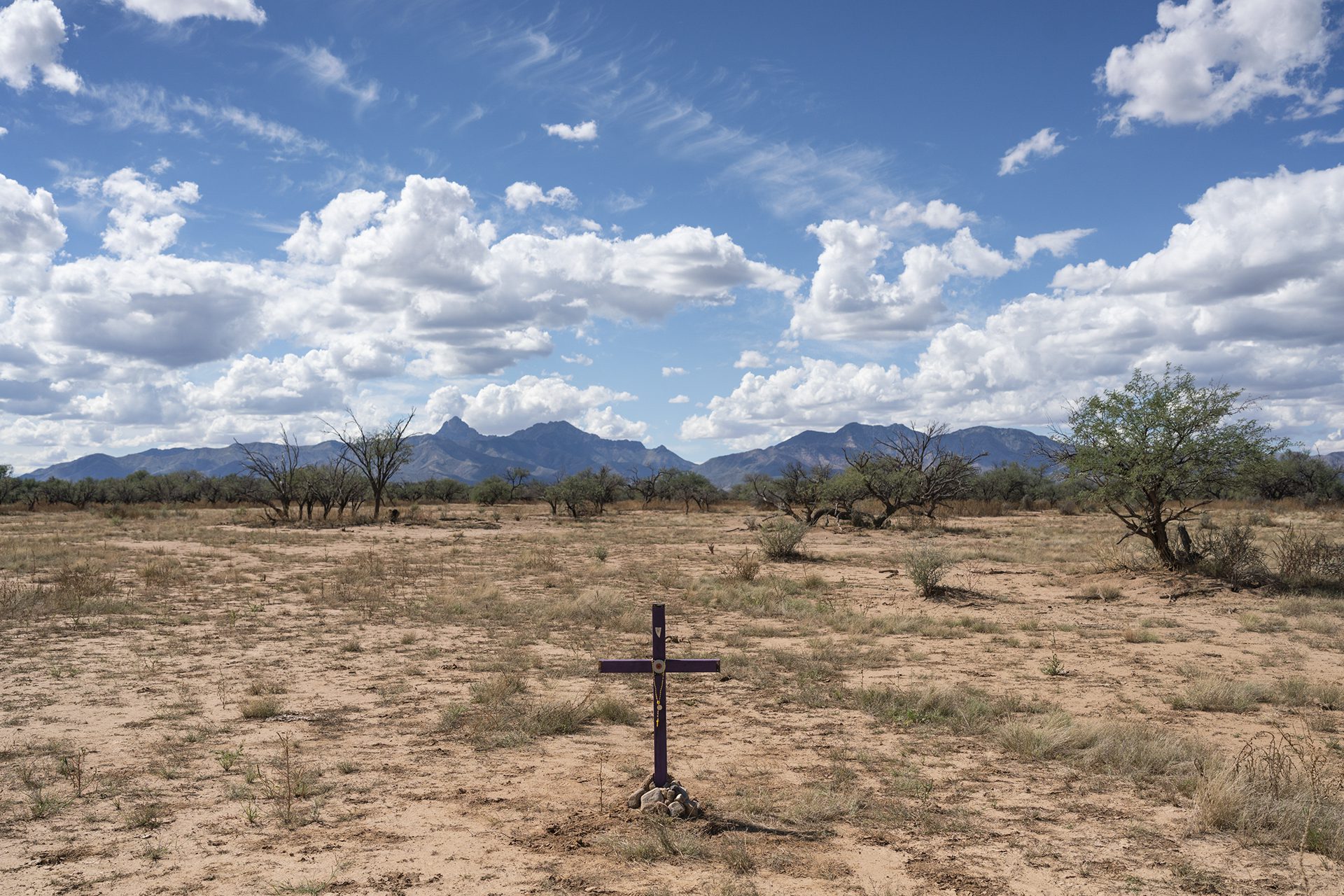 Max Herman para Borderless Magazine
Max Herman para Borderless MagazineEl artista de Arizona Álvaro Enciso ha pasado años de su vida dejando cruces en el desierto por los migrantes que murieron mientras viajaban hacia Estados Unidos.
Todos los martes por la mañana, el artista Álvaro Enciso se adentra en el desierto del sur de Arizona para honrar a los migrantes que han perdido la vida en su viaje hacia el norte.
Noticias que ponen el poder en el punto de mira y a las comunidades en el centro.
Suscríbase a nuestro boletín gratuito y reciba actualizaciones dos veces por semana.
Durante casi una década, Enciso y un grupo de voluntarios de Tucson se han adentrado en el desierto en vehículos todoterreno para plantar cruces hechas a mano, pintadas en brillantes tonos naranja, morado y verde, en los lugares donde murieron inmigrantes. Las cruces suelen llevar tapas de latas encontradas y puntos rojos de cerámica donados por otro artista.
Este inmigrante colombiano de 77 años ha colocado más de 1.400 cruces con hormigón de secado rápido. Algunas están a lo largo de autopistas de dos carriles, otras bajo árboles en pleno desierto. Enciso llama a este proyecto "Donde Mueren los Sueños".
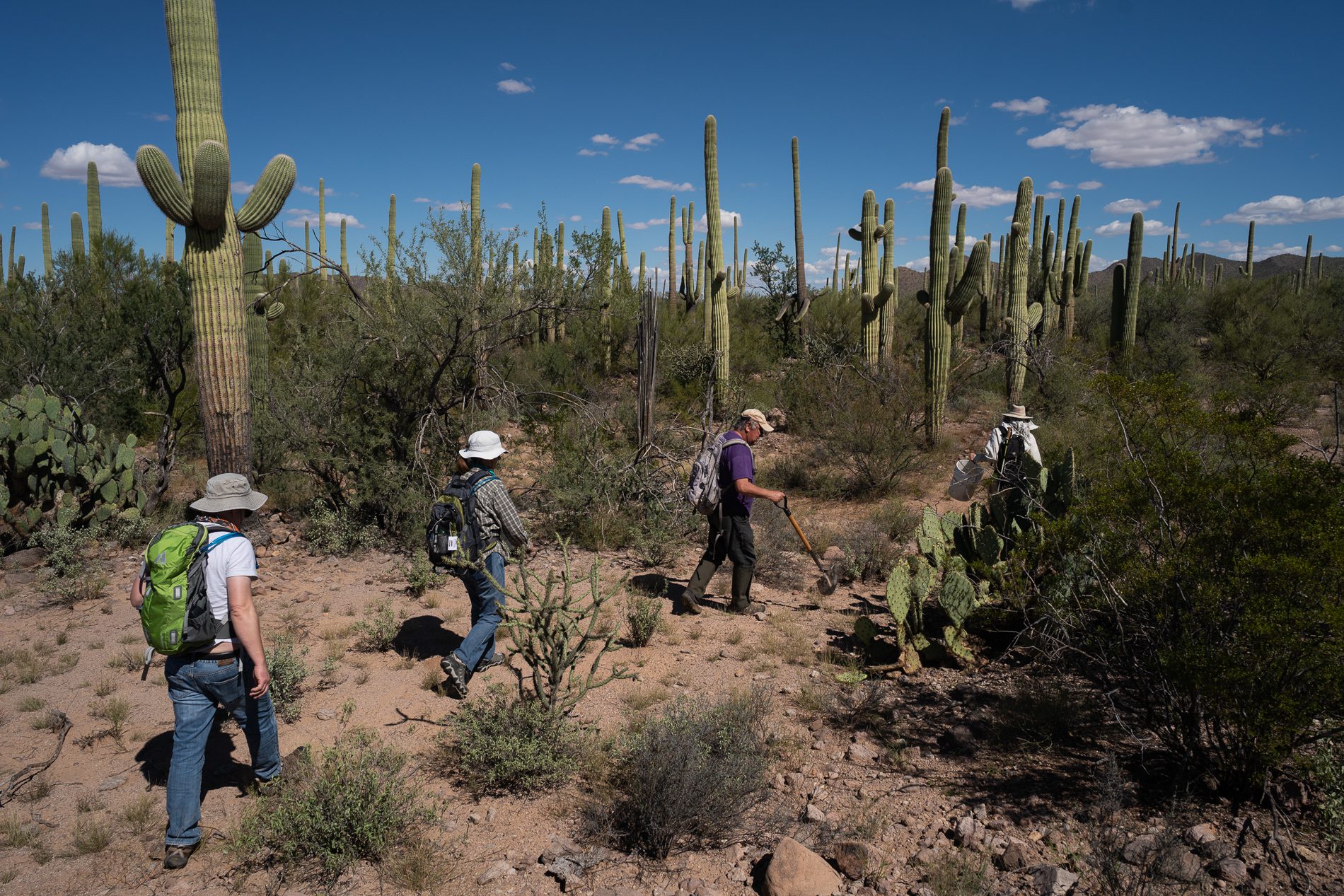
En julio de 2022, se habían encontrado los restos de más de 3.900 migrantes en el desierto de Sonora de Arizona desde 1981. Y el número de muertes en el desierto de Arizona no ha descendido significativamente en los últimos años. El grupo de Enciso, que se adentra en caminos sin asfaltar, en coladas rocosas y a veces abriéndose camino entre arbustos espinosos, intenta dejar al menos tres cruces a la semana para los emigrantes fallecidos. la Iniciativa OpenGIS de Arizona para emigrantes fallecidos.
Es un trabajo difícil. "Se acumula, ¿sabes? Te enfrentas a los muertos. Te enfrentas a algo trágico, te enfrentas a algo que no es bonito. Y te afecta, como al médico forense que ve cadáveres todo el día", dijo.
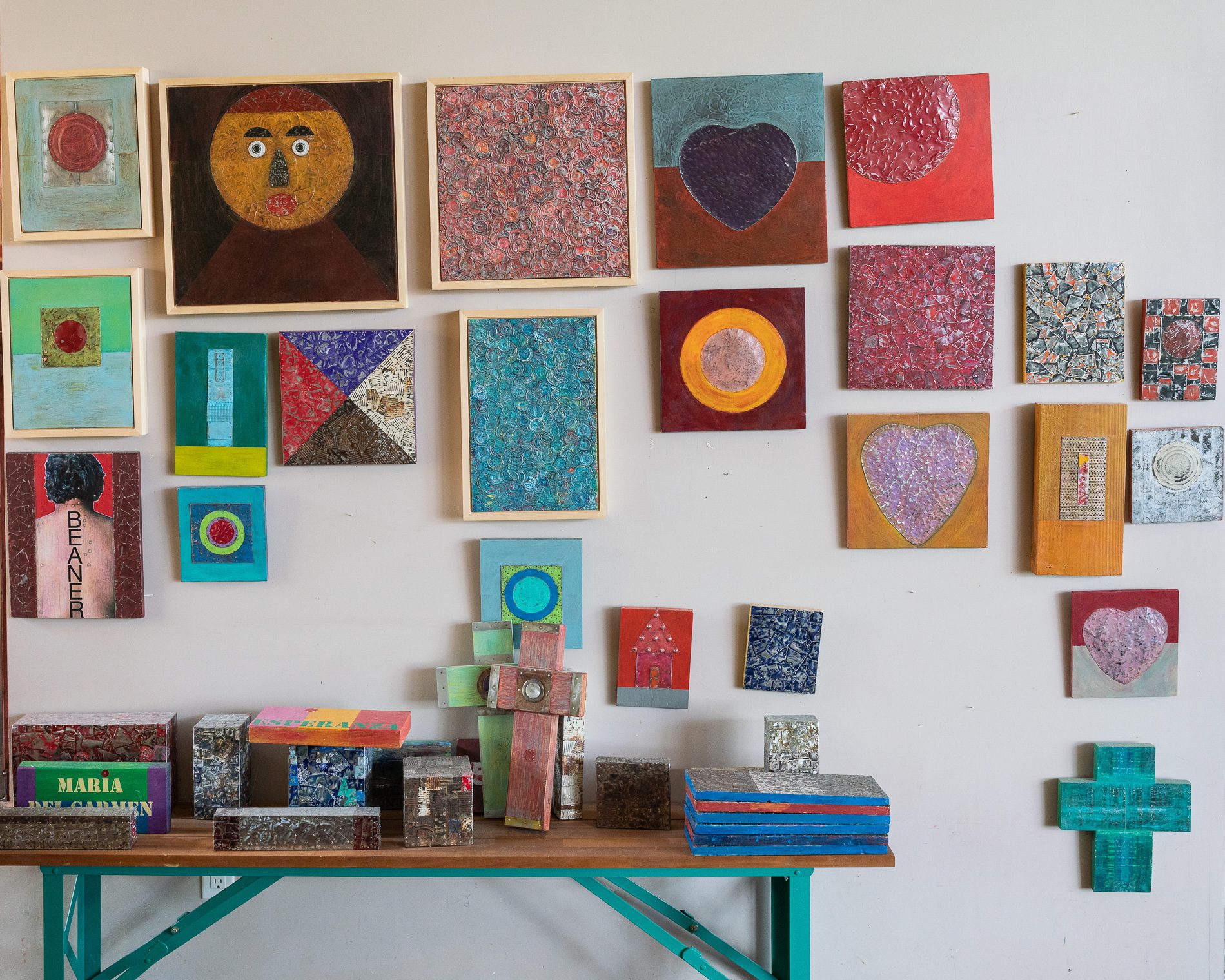
Ahora que Enciso tiene artritis en las rodillas, ya no puede ir solo a algunos de los lugares más remotos. Por suerte, cuenta con voluntarios como Peter Lucero, que le ayudan a abrirse camino por el desierto. Dice que seguirá honrando a los emigrantes de esta forma mientras pueda.
Borderless Magazine habló con Enciso sobre lo que le atrajo a las tierras fronterizas de Arizona, su propia historia de emigración y cómo su práctica artística cambió su modo de vida.
Más información
Cuando se consulta la base de datos de migrantes fallecidos, no se ve demasiado. Ves el nombre de la persona, si fue identificada, la edad, dónde se encontró el cuerpo, la fecha, la causa de la muerte, si se pudo determinar, y cuándo se recogió el cuerpo. Así que las circunstancias de lo que ocurrió allí, no estoy al tanto de esa información. Pero más o menos esa información es todo lo que necesito.
El arte consiste en hacer visible lo invisible. Así que la cruz es el aspecto visible: alguien murió aquí.
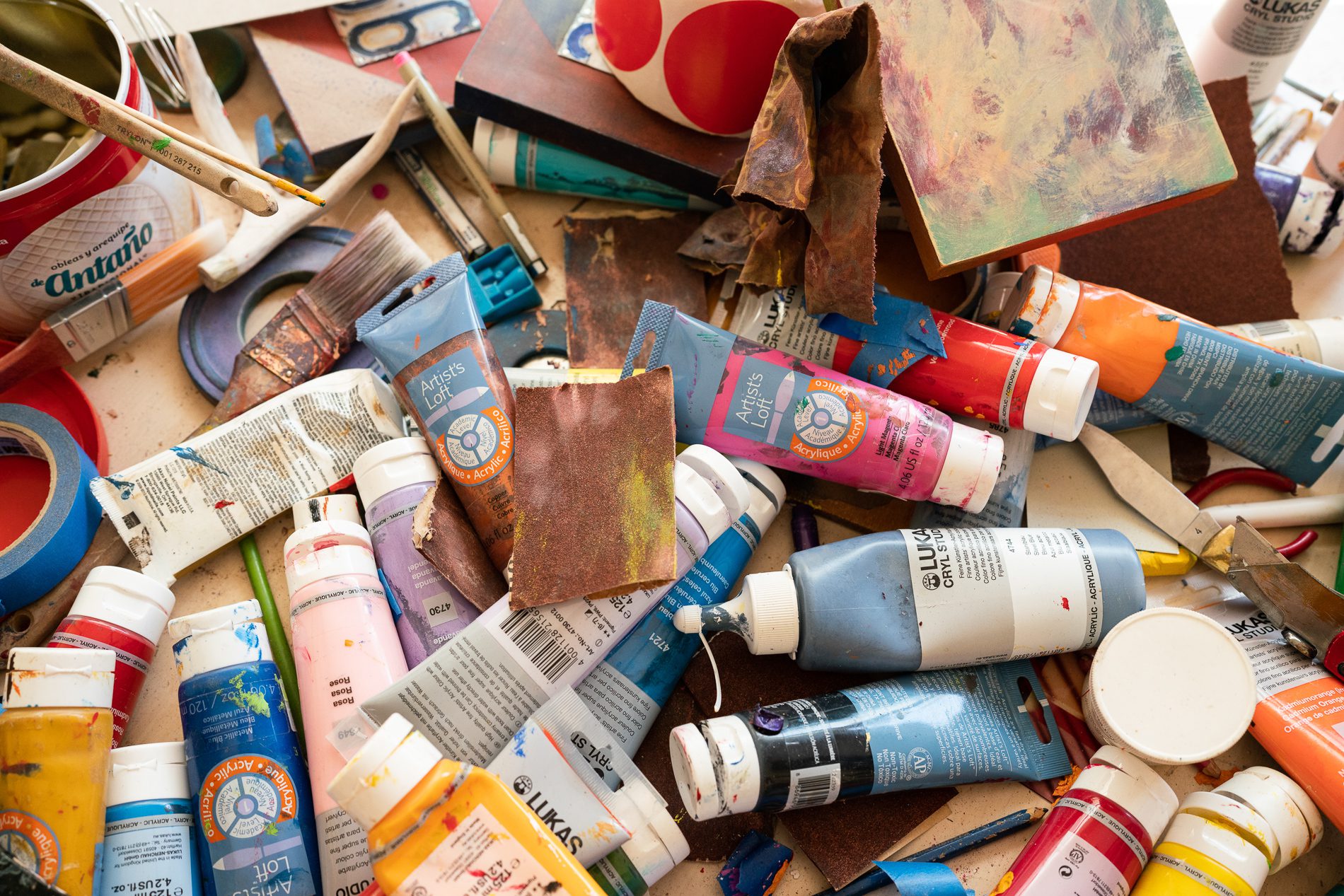
Me mudé aquí a Tucson en 2011. Yo vivía en Nuevo México. Y un día, vi un artículo en el periódico -en el Albuquerque Journal local- sobre un boxeador retirado de la Marina que también era predicador metodista. El artículo era sobre él cargando su camión y remolque con agua, suministros médicos y mantas y conduciendo a lo largo de toda la frontera ayudando a los migrantes, desde Texas hasta California.
En aquel momento, intentaba relacionar mi propio viaje migratorio de hace muchos años con lo que está ocurriendo ahora, porque no es diferente de lo que ocurrió. Llevamos emigrando muchos, muchos, muchos años. Hoy en día es una noticia tan importante. Así que quería conectarme de alguna manera con esta nueva migración porque soy uno de ellos.
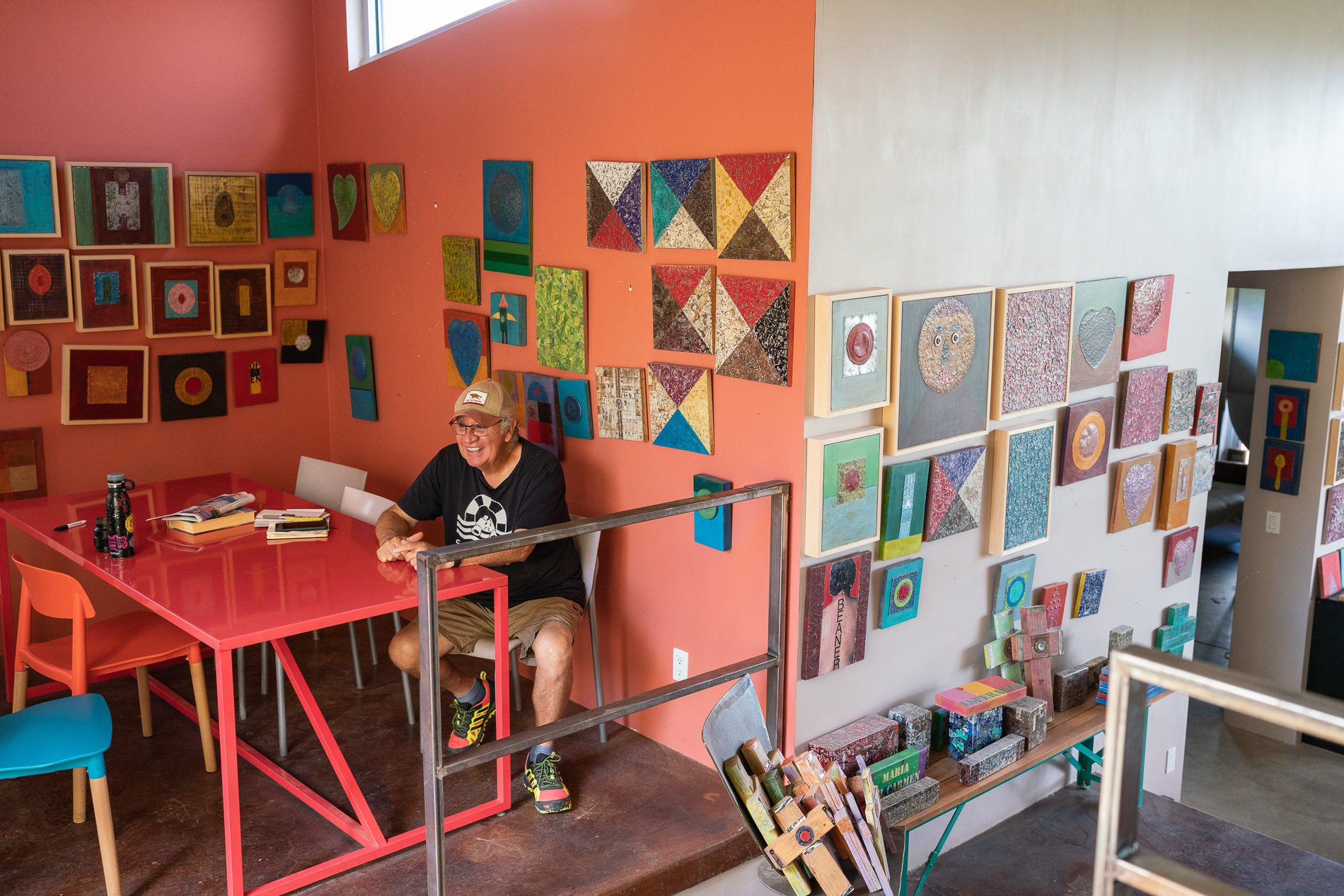
Vine aquí como emigrante. Quiero explorar el sueño americano y cómo contribuye a la emigración. Lo que te atrae aquí es la esperanza de que vas a encontrar todo lo que buscas. Y no siempre es así. Así que vine aquí con el predicador, vi la situación y, por primera vez, me enteré de que los migrantes estaban muriendo en el desierto. Porque en Nuevo México no suele aparecer en las noticias. No lo lees en los periódicos, ya sabes, es como gente "insignificante" muriendo en el desierto.
Ni siquiera la gente de Tucson sabía dónde moría la gente. Sólo veían la lista de cuántas personas morían cada mes o así. Pero realmente nunca fueron a los sitios, no entendieron todo el asunto.
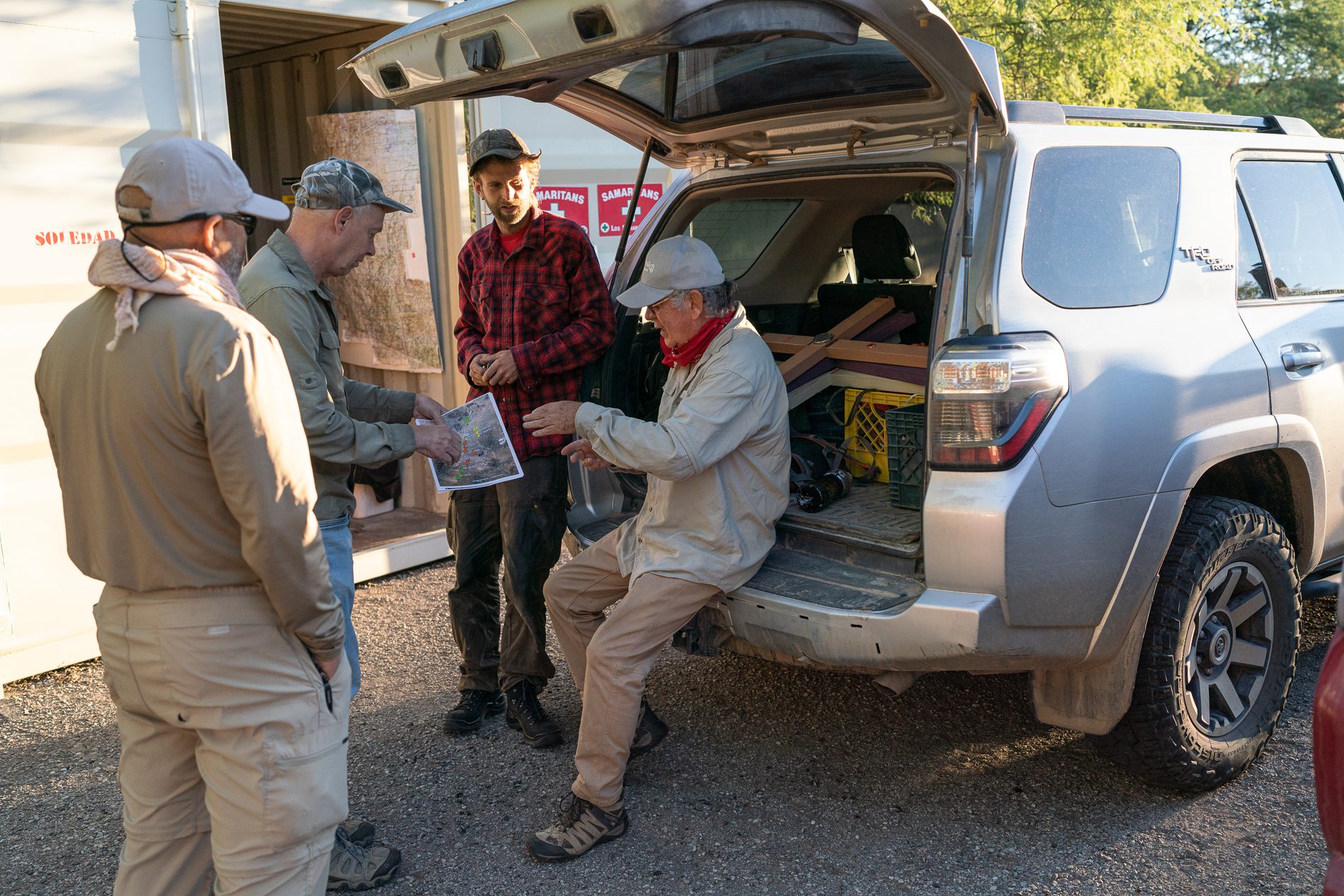
Así que empecé a buscar en ese mapa que Humane Borders tiene con todos los puntos rojos. Es un mapa de miles de puntos rojos. Ni siquiera puedes ver los detalles del mapa porque está cubierto de puntos rojos. Y había algo en los puntos rojos que me atraía porque estoy mirando un mapa y estoy mirando puntos rojos y esto es una obstrucción. El mapa no es el territorio real. El punto rojo es sólo una cosa en el mapa. Así que quise traer ese punto rojo, donde la tragedia real tuvo lugar, y marcar la ubicación de alguna manera para señalar con el dedo: Alguien murió aquí. Podríamos haberlo evitado. Y así fue como empezó todo.
Sacrificio y sueño americano
Al principio, era muy personal. Era mi forma de conectar con mi propia migración y, en cierto modo, de honrar el valor que se necesita para dejarlo todo atrás. Dejas tu país, dejas tu lengua, dejas a tu familia, dejas todo lo que conocías para venir aquí en busca de una vida mejor.
Crecí en un pueblo llamado Villavicencio, en el centro de Colombia. Quería ir a la universidad. Me encantaba la literatura y estudiar todo tipo de cosas. Pero en Villavicencio, la universidad era para los ricos, los únicos que podían pagarla. La única manera que tenía de ir a la universidad era intentando encontrar el camino a Estados Unidos. Pude conseguir un visado permanente para vivir aquí, gracias a mi tía de Nueva York. Así que vine aquí para recibir una educación.
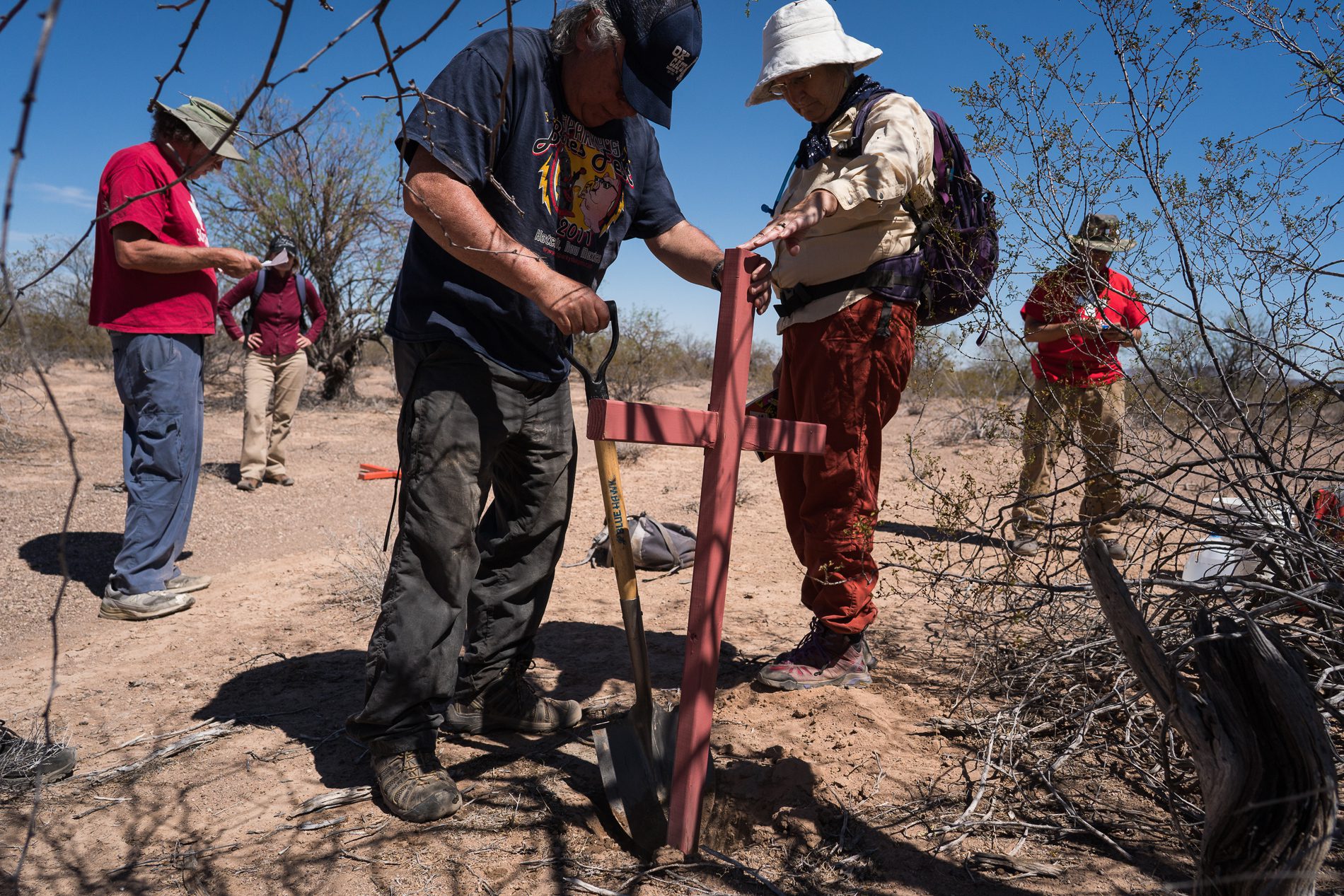
Fui muy ingenuo al pensar que aterrizaría aquí e iría, por ejemplo, a la Universidad de Columbia. Pero ni siquiera tenía los documentos que demostraran que había terminado el bachillerato. No tenía ni el idioma ni el dinero para pagarlo. Me reclutaron en el ejército estadounidense, pero entonces vi una oportunidad. Estuve 14 meses en Vietnam y cumplí dos años de servicio militar. No iba a dejar que se desperdiciara la G.I. Bill. Era la oportunidad que buscaba. Era mi billete. Pude encontrar mi camino a la universidad. Por eso hablo de encontrar trozos del sueño americano, pero nunca de encontrarlo entero, porque no creo que exista entero.
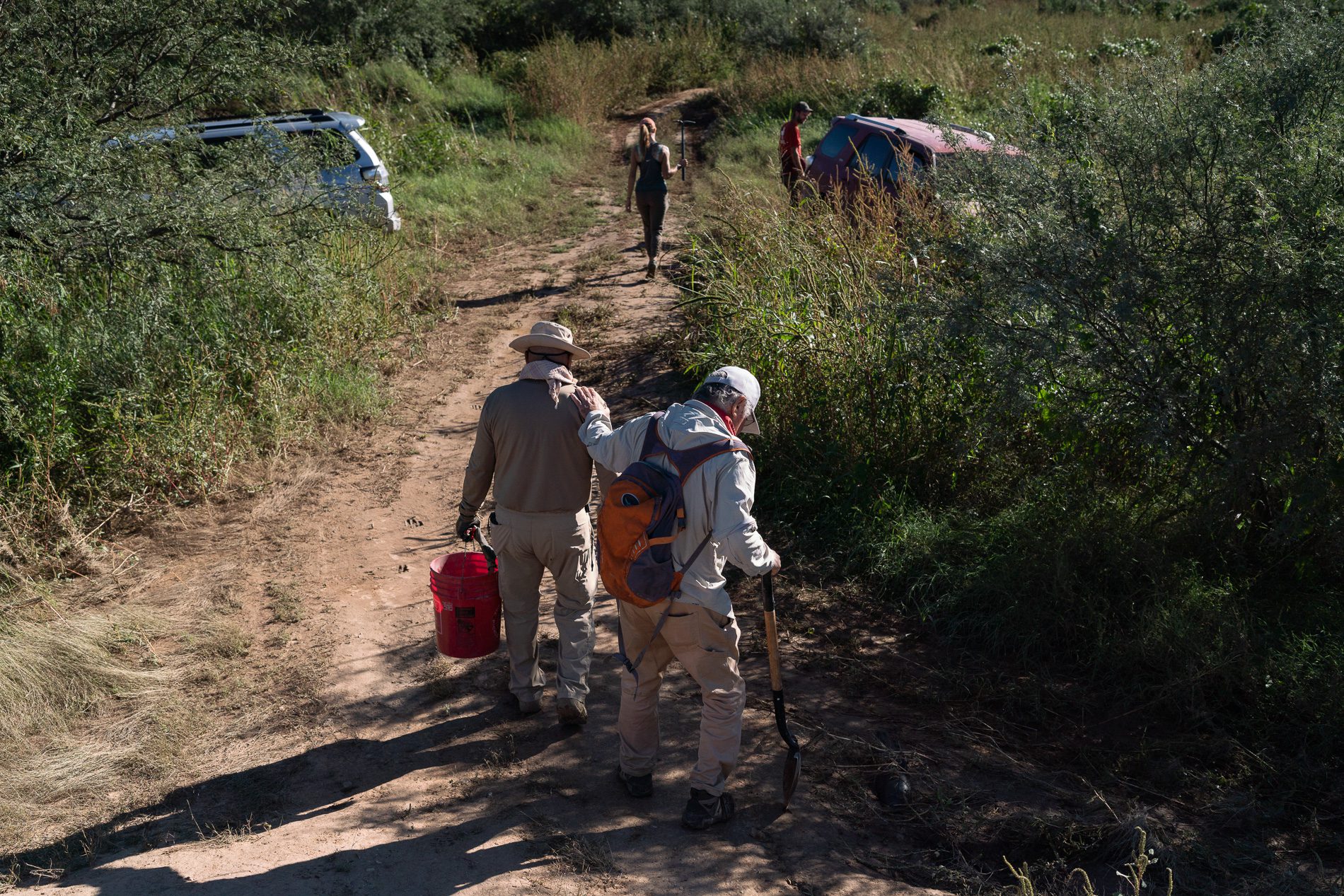
El sueño americano nunca fue concebido para los nativos americanos, los mexicanos, los negros, los chinos. El sueño americano no es para ellos. No cumplen el perfil que tenemos aquí. No los queremos. Entonces empecé a pensar más en la gente que muere en vano, que muere por un sueño que quizá no existe. Poner cruces en el desierto es para mí una forma de afrontar mi propia identidad y cómo vivo en dos culturas. Trata de la dislocación que se produce cuando te preguntas a quién perteneces. ¿Y cómo negocias tu propia existencia y tu propia vida en dos lenguas y dos culturas?
Marcar las pérdidas y contar las bendiciones
Cuando voy a poner una cruz, es una oportunidad para conectar con mis propias pérdidas en mi propia vida. Cada vez que voy allí, pienso en mi abuela que me crió y que murió. Mis padres -mi padre al que nunca conocí, pero también está muerto y mi madre que está muerta y todas mis desgracias románticas- también son pérdidas. Todo eso forma parte de lo que eres. Así que cada vez que voy a poner una cruz, traigo todas mis, como dicen los nativos americanos, todas mis relaciones. Llevas todas tus experiencias y todos tus amores y todo tu dolor a estos lugares y haces el duelo allí.
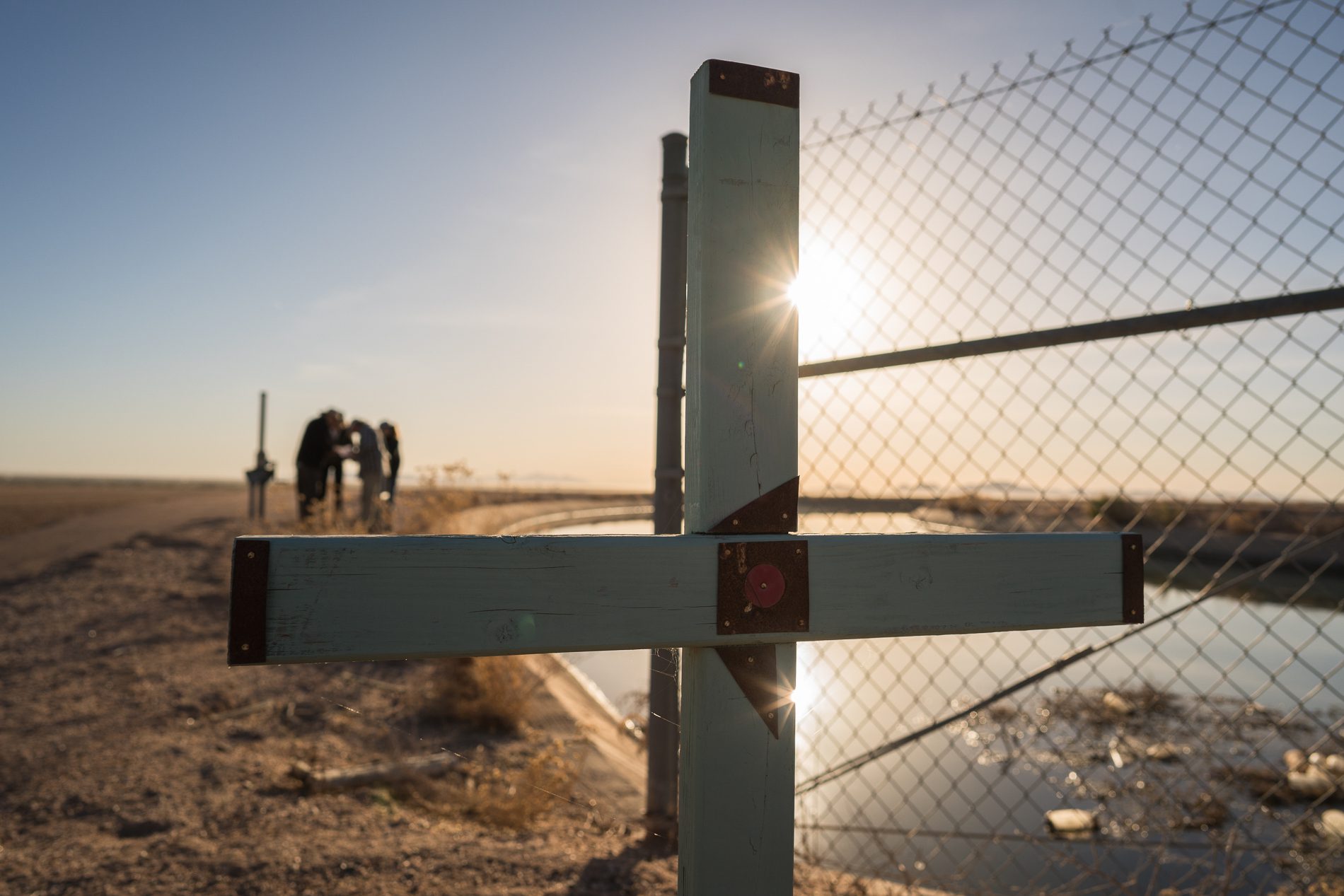
Así que los martes es el día que voy a la iglesia. Es el día en el que expío, el día en el que lloro. Y el día en el que hago algo por un desconocido al que nunca conocí. Pero lo considero parte de mi vida, porque voy al lugar donde murió. Y marcando ese lugar. Y ese desierto tendrá un monumento conmemorativo para él o ella que estará allí durante muchos años.
Este proyecto mío me ha dado más de lo que yo le he dado al proyecto. El retorno ha sido mayor. Me ha convertido en mejor persona. Tengo más empatía. Tengo más compasión. Presto atención a las cosas. Escucho a la gente. Ese tipo de cosas que antes no se me daban bien.
Estoy honrando a alguien cada vez que voy allí y pongo un marcador para alguien que decidió hacer el viaje sabiendo de antemano el riesgo. Y eso, para mí, es un acto de valentía.
Las fotos de este reportaje se tomaron entre febrero de 2018 y octubre de 2022.
Para saber más sobre el trabajo de Enciso, síguelo en Instagram.

